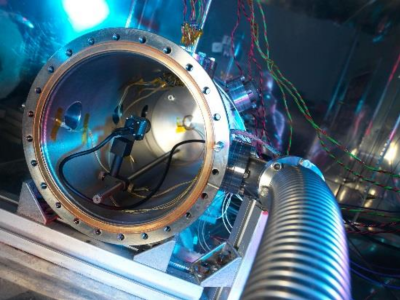De-risk assessment: Metrology enabled thermal imager for thermal vacuum

The technical objective of this activity was to modify an off the shelf thermal imager, that was low in size, weight and cost, to function in thermal vacuum. It was also to do so across a temperature range of -40 °C to 60 °C with low outgassing. In addition the thermal imager was to have a calibration uncertainty of ± 1 °C (at 95% certainty) for an in vacuum calibration.
Thermal imagers can provide temperature measurement over a large area with high resolution, but they require further development to deliver lower uncertainty quantitative temperature measurement across all important components. One of the ways to improve thermal imager performance and ease of use is it to have the device operate in thermal vacuum. As such this is the next stage of development, with current thermal imaging capability – calibrated by NPL – already producing important results whilst still operating from within canisters at atmospheric pressure and viewing the target though a window.
The objectives of the de-risking project were all achieved. A Boson thermal imager with a weight of 44g was successfully modified to exhibit outgassing complaint to the ESA standard and the maximum operating temperature of the imager was increased from 48.5 °C to 60.3 °C. This thermal imager was also calibrated to an uncertainty of ±0.75 °C and ±1.05 °C (at 95% certainty) at the low and high end of its operational range (not considering the non-uniformity across the thermal image). This was a dramatic improvement compared to the thermal imagers off the shelf performance and no roadblocks to its high performance operation in thermal vacuum were encountered. As such our flexible, low cost, low uncertainty thermal imager is ready for continued development.
The first target application for this technology would be in the thermal vacuum ground testing of spacecraft components and entire vehicles such as satellites. Here the thermal imager can be placed anywhere – including internally – to provide a high resolution, low uncertainty measurement across a large area. This would reduce the need for large numbers of contact sensors whilst also providing more information. A further application would then be including such imagers on a system in flight to provide temperature measurement data.
The next stage for this activity would be the continued development of the design into a first prototype culminating in testing at ESA thermal vacuum testing facilities and with other commercial partners. More funding is being targeted to achieve this and this the target date for the completion of this next stage is mid-2021. Testing and development will be required on any final prototype and the availability of a fully developed thermal imager (TRL 8) has a target date of mid-2024
